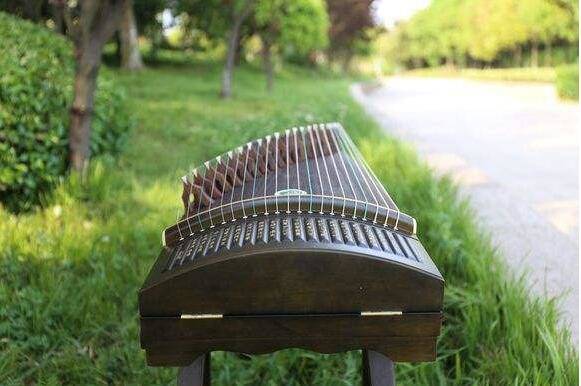The Development of Guzheng Playing Methods and Skills
Today, the zheng is popular in professional performances and folk, and it is a popular musical instrument among the masses. But playing the zither with fake armor is not a modern invention. As early as the Southern and Northern Dynasties (502 BC), the Liang Dynasty "Liang Shu Yang Kan Biography" contains: "There is a zheng player Lu Daxi, with antler claws, seven inches long." In Li Shangyin's "Untitled Two Songs" poem There are: "Twelve lessons to play the zither, the silver armor has never been removed." In addition, the use of false armor is recorded in the "Zi Lei Lu" as follows: "To play the zheng, or cut bamboo into armor, to help the sound of the index finger It is also because Duke Yan also abandoned the real and used the fake, so he abandoned the pure and replaced the turbid. It is only the reason why people are overestimated. As for Kong Houzhi and Qin Zheng, if they can get rid of the fake and return to the real, their voices will be gentle and beautiful."
Going back to its origin, since there are the sayings of "referring to" and "returning the fake to the real", it can be seen that the zheng was originally played with meat armor. Later, due to the large volume of fake armor, easy to use, and not easy to damage, it gradually replaced the meat armor, which has been spread to this day. With the continuous development of zheng playing technology and the strengthening of playing strength, as well as the thickening of zheng strings, false armor has become more popular.

In traditional zheng music, the right hand plays the melody, and the left hand uses techniques such as shaking, pressing, sliding, and kneading. As for when the left hand began to move to the right side of the zheng code and the right hand played at the same time, it is impossible to know, but the image of playing the zheng with both hands has been seen in Dunhuang frescoes, and there are also vivid hands playing in the group sculptures of the Shuilu Temple in Lantian, Shaanxi Province. The musical image of the zheng.
In 1935, in the guzheng part of the ensemble "General's Order" printed in type by the Hangzhou Chinese Music Research Society, the use of the technique of "grasping the zheng with both hands" can be clearly seen. We can also see the simple accompaniment patterns and stroke techniques of the left hand in songs such as "Yue'er Gao" and "Sihe Ruyi", which were passed down by Mr. Wang Xunzhi.
In 1955, Professor Zhao Yuzhai composed the zheng piece "Qing Feng Nian", which made a breakthrough in left-hand skills. In this piece, there are arpeggios, chords and triads, the left hand can play the melody alternately with the right hand, and the playing skills of the big, forefinger and middle fingers of the left and right hands have been greatly developed. A new chapter in tricks.
In 1965, Wang Changyuan, a former guzheng player of the Shanghai Chinese Orchestra, composed the zheng solo "Fighting Typhoon", based on the traditional "four-point-one" fingering method to create the "sweep and shake four-point" playing method, based on the traditional index finger wiping method , and created the playing method of "playing with the index finger of both hands", which pushed the guzheng playing technique to a new stage.
After "Fighting Typhoon", the appearance of songs such as "Happiness Canal Water to My Village", "Little Sisters of the Prairie Heroes", "East Sea Fisherman's Song", etc., continued to develop and perfect the two-handed guzheng playing skills. After the 1980s, modern zheng music has sprung up like mushrooms after a rain. Songs such as "The Charm of the Mountain" and "Ode in Qianzhong" break through the traditional tuning method of the pentatonic scale.
With the continuous emergence and innovation of new two-handed playing skills, the expressive power of guzheng will continue to improve, and it will continue to promote the development of guzheng career.
 渝公网安备 50010702504639号
渝公网安备 50010702504639号